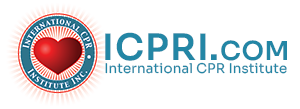First of all, let me begin by saying that most of what I’m writing comes from reports from the Mayo Clinic, and others who have not only done extensive studies, but are continuing to monitor reports of future deaths among athletes.
Before going into detail, you must understand that there is a difference between “sudden cardiac death” and “sudden cardiac arrest”. Sudden cardiac death, just as the name implies, is more serious but is very rare in healthy people under the age of 35. Usually there’s an undiagnosed health reason such as a genetic defect that is the cause It might not be the physical exertion itself, that’s the cause. In fact, sudden cardiac death may occur without physical exertion. When you think about the number of athletes from the early stages of youth sports through professional sports that compete on a daily basis, the number of deaths from sudden cardiac arrest are miniscule. Sudden cardiac arrest is the sudden loss of heart activity due to an irregular heart rhythm. With sudden cardiac arrest, survival is possible with fast and skilled medical care. It’s so important that trained personnel be present at all organized activities, not only for children but adults as well. You may know the story of Damar Hamlin, the Buffalo Bills football player who survived sudden cardiac arrest because of the prompt medical attention he received.
Most deaths attributed to sudden cardiac death are in older people, not necessarily athletes, and usually those with a previously diagnosed heart disease. However, after stating this, it is true that sudden cardiac death remain as the number one cause of deaths in young athletes. According to the Mayo Clinic, estimates vary from anywhere between 1 in 50,000 to 1 in 80,000 young athletes die of sudden cardiac deaths each year. Still, even one is too many so it’s important that every athlete receives a full physical before starting any to play any sport and the physicals should be done often.
What is “Ventricular Fibrillation”?
Ventricular Fibrillation is very often caused by faulty electrical signals in the heart. When a heart is beating very fast it causes the lower heart chambers (called ventricles) to quiver instead of pumping blood. Thus, the term ventricular fibrillation (fibrillation; noun – a: a muscular twitching involving muscle fibers acting without coordination b: very rapid irregular contractions of the muscle fibers of the heart resulting in a lack of synchronism between heartbeat and pulse).

What is Sudden Cardiac Arrest.
Sudden cardiac arrest is different. As stated previously, with immediate care, the survival rate is much higher but without immediate treatment it can also lead to death. Treatment includes cardiopulmonary resuscitation (CPR) and the use of an automated external defibrillator (AED).
Note that sudden cardiac arrest isn’t the same as a heart attack. A heart attack occurs when blood flow to a part of the heart is blocked. Sudden cardiac arrest is not due to a blockage. However, a heart attack can alter the heart’s electrical activity that leads to sudden cardiac arrest.
What are the symptoms of sudden cardiac arrest?
- A sudden collapse
- No pulse
- No breathing
- Loss of consciousness
There are other signs that may occur before a sudden cardiac arrest. They include chest discomfort, shortness of breath, weakness, fast beating or fluttering (usually called palpitations). See your doctor if you recognize any of these warning signs.TAKE A CPR COURSE SO THAT YOU WILL KNOW WHAT TO DO IN AN EMERGENCY!
